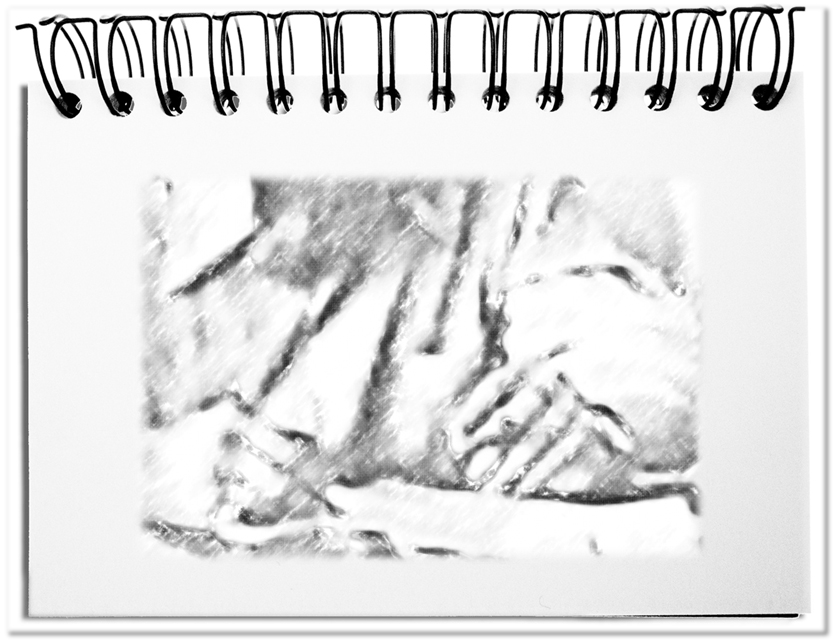The way from the idea to the finished text, with all its illustrations and formatting, follows in many cases a similar procedure – mental walkthrough, thematize, draft, formulate, and format. In each step special formats are necessary. If the thought is not yet condensed, then a clean copy still makes no sense. If you prepare formatting, then a sketch is no longer sufficient. Thus, the necessary form always follows the state in the life cycle of a text.
The following steps offer some examples.
- Talking
Talking is the suitable format, in order to share an idea with others. At this moment the words are found for the first time, which express the thoughts. The argumentation evolves while you are talking based on the questions of the listeners. This sharpens the idea.
As long as the conception has not stabilized, the sophisticated explanation is not helpful, since the outline is not yet present. - Sketching
The words found can now be collected and correlated. This way a sketch of the original idea slowly evolves. Now is a good moment for taking care of the vocabulary that concentrates the contents in the desired direction.
A Mind map is an effective tool for sorting the elements and to receive a first picture of the structure. - Designing
Based on the sketch the raw version of the text can now be created. In this step the shape of script is compiled. The headings, a first rhythm of the paragraphs and graphical ideas appear.
At the latest now the application of a text processing provides a lot of advantages. If there are already general formats for the headings, paragraphs and images, it facilitates the subsequent work, even if these are not the final formats. - Elaborating
At any time the elaboration of the final texts and pictures begins. The contentual, common themes that will be used become conclusively fixed e.g. which metaphor fields or which constant illustration style (e.g. photo, diagrams, and cartoons) you want to use. From now on contents are taken with a pinch of salt and brought into the final condition.
You are still not in the intended format. But the ultimate contents should now be formulated and arranged to over 95%. - Formatting
In order to eventually format it is necessary to decide the target format – A4-PDF, E-Book, printing book (A5, standard book, text book A4). This leads to the requirements of the concluding format. The footers, cross references, frames, and additionally the imprint, blurbs etc. require now the conclusive text.
You see for the first time, how the end state will look like. The concluding checks and the last contentual changes are accomplished in this format.
During the production there is no way back. The print copies fall out of the printing process and can only be changed with much effort. Changes can only be integrated by pasting corrections over the wrong parts, by putting some pages manually into the text or by correcting the next edition. Depending upon the size of the edition the preparation needs more or less accuracy.
The largest mistake in the procedure to be made is skipping a step. If for example an illustration is immediately finalized without scribbles. Or, if in the absence of ideas, the formats are prepared at an early stage. Nobody develops a concept from scratch in one go to the final contents. The formats prevent the free flow of ideas.
Bottom line: Each step in the development of new topics has its best format. From talking, to sketching, to outlining, to elaborating, to formatting there is always a format. The discussion facilitates a kneading of the own thoughts; the sketch creates the draft structure free of complicated formulations; the elaboration of the topic is facilitated by an appropriate text processor; most of the programs support all possibilities of formatting.
If a format is used too early in the procedure, it slows down the development. Contentual elaboration is the obligation; the format is the free style. Therefore: The form follows the status of the life cycle of a text – and not the text the format.

